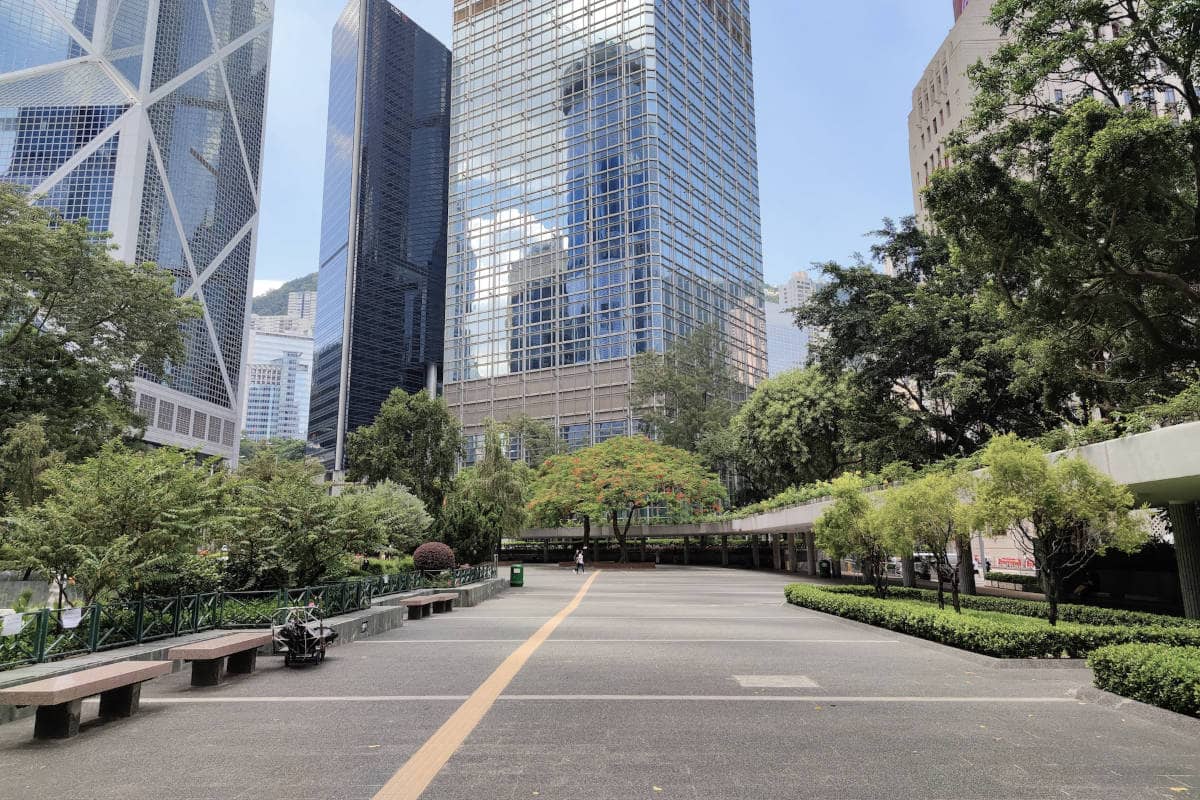
What Is Wayfinding?
Wayfinding is a process that people use to identify where they are in a space and navigate to a desired destination. Wayfinding is an essential part of effective commercial landscaping design and, when implemented properly, helps to create properties that are simple to navigate and allow people to quickly get from place to place.
There are four major stages to “finding your way” when trying to go somewhere:
Orientation
Orientation refers to people being able to identify their location within a space. It’s important to create spaces that make it easy for people to know where they are, where they’ve come from, and where they want to go.
Route Decision
When navigating a space, people need to be able to easily determine what paths they need to take to reach their destination.
Route Monitoring
After setting out toward their destination, people need to be able to confirm they’re still going the right way.
Destination Recognition
Destination points should be easily identifiable so that people know when they’ve arrived.
The Essential Wayfinding Elements for Landscape Design
In order to help people quickly and easily find their way, there are a few key wayfinding elements that you should implement in your landscape design:
Signage
Signage is the most commonly utilized wayfinding element because it is so simple and effective. Humans are visual creatures, and good signage conveys everything that people need to know with visual identifiers that take a fraction of a second to see and process. Effective signage follows three simple principles:
- Don’t make people think or take too much time to find their way
- Show only what is relevant to helping people find their way
- Make directions and other information as concise and easy to understand as possible
There are four main types of signage that play a part in effective commercial property and landscape design:
- Information signs (like maps) that allow to people orient themselves and locate their destination
- Directional signs that help people keep going in the right direction along their route
- Identification signs that provide information about specific locations (a list of businesses in a specific area of the property, bathroom signs, handicapped parking spots, etc.)
- Warning signs that mark emergency exits, non-smoking areas, restricted areas, etc.
Well-structured Paths
Well-structured paths are vital for effective wayfinding because they make it easy for people to get from Point A to Point B. Walkways need to be laid out as directly as possible in order to help people quickly reach their destination. Having to navigate maze-like webs of paths or take round-about ways to a given place will only make people frustrated and increase their chances of getting lost. Lighting, trees, and other plants can also be used to highlight pathways and guide people along the property.
Landmarks
Landmarks are incredibly useful for wayfinding because they act as navigation points within a space. Effective use of landmarks allows people to quickly identify where they are and if they’re heading the right way toward their destination. People often use landmarks when giving directions because they visually stand out and are easy to identify. Landscape design features serve as great landmarks, making them both functional and aesthetic.
Unique Visual Identities for Different Areas
Apart from landmarks, other visual cues can be used to divide different areas of the property. Plant selection, decorations, color scheme, and other landscape design elements can be used to visually separate areas of the property, making them easier to spot and use for navigation. Trees, shrubs, and other plants can also act as separators to physically break up spaces into different parts and help guide people along certain paths.
Sight Lines
Sight lines are incredibly useful for navigation and can be used to quickly pinpoint landmarks, paths, and destinations. By designing the layout of your property and its landscaping in a way that keeps everything relatively open with clear sight lines, you will allow people to easily identify different points along their route and “leapfrog” their way visually toward their destination.
Building/Business Entrances
The entrances to buildings or different businesses housed in the same building should act as beacons to draw people in. Entrances need to stand out visually and grab people’s attention to make sure that they don’t overlook your business and wander around confused. Along with having a big sign hanging above their door, businesses can incorporate plants, decorations, and their brand’s color scheme into their entrance design to be more easily identifiable.
Branding
For properties like shopping malls or office buildings that house various businesses, brand recognition can be an effective wayfinding tool to help guide customers. A brand logo and color scheme are almost instantly recognizable to the human eye, much more so than a company’s name displayed in plain text on a list. Using brand recognition will help to create easy to understand maps and signage that will quickly show people where they need to go.
Help Your Customers Find Their Way with GroundMasters Landscape Services
With over 28 years of experience, our team can help you create and maintain a commercial landscape that is sure to catch people’s eye and guide them to your business. Our landscape design experts can help you design or renovate your property with a full range of landscape enhancements, and we take pride in being a year-round service provider for commercial landscape maintenance.
To see what GroundMasters can do for your Denver area business or commercial property, give us a call today at (303) 750-8867 or get in touch with us online to get started.
